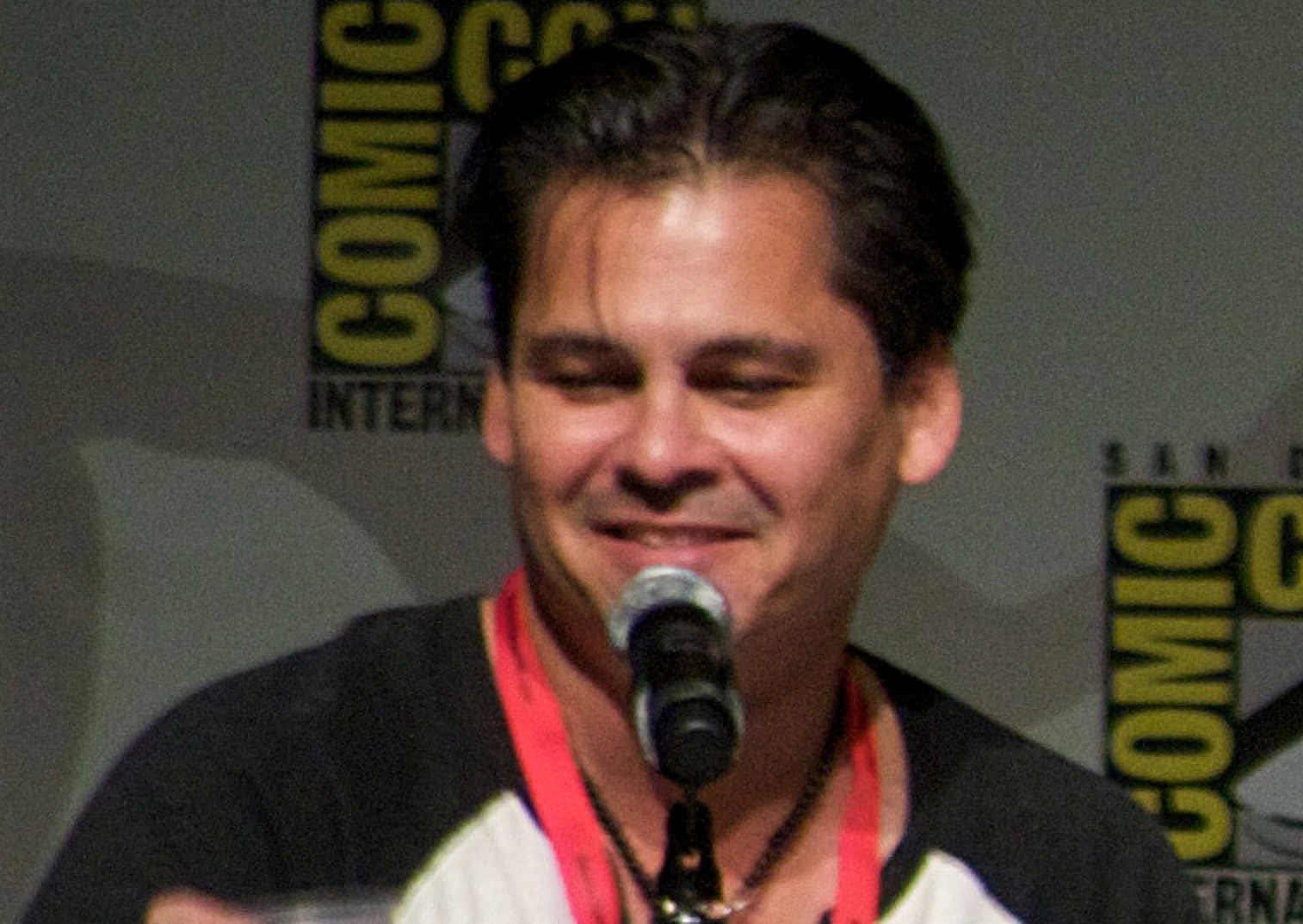Sting—aka Gordon Matthew Sumner—went from school teacher to punk rock trailblazer in a heartbeat. Then, before his first band had a chance to go stale, he became a multi-Grammy-winning solo artist. And somehow, this superstar has managed to keep the celebrity drama to a minimum. Well, at least he did until recently. You see, something from his past has suddenly come creeping back to haunt him.
1. It Changed His Life
What do you get when a hairdresser marries a milkman? Well, you get Sting. Of course, he wasn’t born Sting. At his birth, on October 2, 1951, his parents named him Gordon Matthew Thomas Sumner.
Growing up in Wallsend, England, Sumner seemed fated to end up working at the nearby shipyards—where most guys his age ended up.
Sumner could have done manual labor for the rest of his life. Then something rolled past him that would change his life forever.
2. He Wanted More
What rolled by Sumner’s gaze was a beautiful—and expensive—Rolls Royce. It was, however, the person who was inside the luxurious car that made a big impression on Sumner: it was the Queen Mother. What's more, she waved right at him.
From that point on, Sumner knew that he wanted a more glamorous lifestyle than his working-class parents could offer him. There was just one problem: He had no idea how he would get it.
 Harryhesse,, Wikimedia Commons
Harryhesse,, Wikimedia Commons
3. He Was Obsessed
Sumner was busy helping his father deliver the milk at the tender age of 10 when he saw something that caught his interest. One of his dad’s friends had left England forever, but he left something behind: a very used Spanish guitar.
Sumner soon became obsessed with the instrument and took the guitar as his own. He now had a plan: Music would get him the glamorous lifestyle he wanted so bad.
 S Pakhrin from DC, USA, CC BY 2.0, Wikimedia Commons
S Pakhrin from DC, USA, CC BY 2.0, Wikimedia Commons
4. He Made The Wrong Choice
While still in high school, Sumner started to find his way into nightclubs. There he saw bands like Cream and Manfred Mann and his musical taste went in their direction.
Once he finished high school, Sumner had to think clearly about what was best for his future. He questioned his decision to use music to make a living. Surely, it was a long shot.
Instead of pursuing a music career, he chose university. This proved to be the wrong choice.
 paveita, CC BY 2.0, Wikimedia Commons
paveita, CC BY 2.0, Wikimedia Commons
5. He Walked Away
Once Sumner got a taste of university life, he realized it wasn’t for him. After just one single term he walked away from academia. Instead of now looking for work as a musician, Sumner did odd jobs. He was a construction worker, a tax officer, and he even drove buses.
He was obviously lost and didn’t have a clue what to do. This would have been a good time to look into a chance for a career in music—but he didn’t do that.
 David Shankbone, CC BY 3.0 ,Wikimedia Commons
David Shankbone, CC BY 3.0 ,Wikimedia Commons
6. He Mapped Out A Future
Sumner still didn’t think he could make a living in music, so he went back to school. From 1971 to 1974 he attended Northumbria University where he eventually emerged with a teaching certificate.
This was going to be his future: teaching school for money and pursuing his passion on the side. Once he got a job as a teacher, he started getting gigs playing jazz at night.
 paveita, CC BY 2.0 ,Wikimedia Commons
paveita, CC BY 2.0 ,Wikimedia Commons
7. He Got A Nickname
Sumner was moonlighting as a jazz musician with several different bands. People in the clubs soon noticed something unusual about him: He always wore a black and yellow sweater. One of the band leaders noticed this and said that Sumner looked like a bee.
Later, Sumner said that what he was actually going for a wasp, but that didn’t matter. He soon had the nickname “Sting” and it seemed to stick.
Once he had his clever nickname, he needed to find a larger audience.
 Sting_by_Yancho_Sabev.jpg: Yancho Sabevderivative work: Fiorellino, CC BY-SA 3.0, Wikimedia Commons
Sting_by_Yancho_Sabev.jpg: Yancho Sabevderivative work: Fiorellino, CC BY-SA 3.0, Wikimedia Commons
8. He Was Discovered
So, Sumner was living his “teacher by day, musician by night” lifestyle, and it would have continued like this if something hadn’t happened. Stewart Copeland was an American drummer and the son of a CIA agent.
He was living in London, but he happened to be in Newcastle for one of Sting’s performances. He liked what he saw, so next, he approached Sting with an offer.
 S Pisharam from Columbus, US, CC BY 2.0 , Wikimedia Commons
S Pisharam from Columbus, US, CC BY 2.0 , Wikimedia Commons
9. He Said Goodbye
In 1977, Sting said goodbye to several things in his life. He said goodbye to his real name, to jazz, and then finally to Newcastle. He moved to London and formed a little punk band called the Police.
He also said goodbye to being single. His new wife was Irish actor Frances Tomelty. While Sting was quickly getting famous with the Police, he was also building a family with Tomelty.
10. They Took It By Storm
First consisting of Sting, Copeland, and guitarist Henry Padovani, it was only when Andy Summers replaced Padovani that the Police really started taking off. It didn’t take long for the band to get famous after that.
Punk music was gaining in popularity and the Police were taking it in a new and exciting direction.
They soon came out with an album they called Outlandos D’Amour and the song “Roxanne” took the world by storm.
11. The Opposite Happened
Before the Police made Sting a superstar, he’d already tried his hand at acting. Quadrophenia is a film based on an album by The Who. In it, Sting plays a sort of idol to the main character, but he’s eventually discovered to be just an ordinary bellhop at a hotel.
In real life, however, the opposite was happening to Sting. He was a regular guy about to attain very major idol status. Between making the film and releasing it, Sting had become a star.
12. They Needed To Dye
The Police's iconic blonde locks have a surprising origin story. Before they made it big, the band did ad work for extra cash. When Wrigley’s spearmint gum wanted a punk band for an ad, they wanted them to be blonde.
All three members of the Police complied and dyed their hair. After they shot the ad, they realized it was a good look and they decided to keep it. The look—like gum—stuck. Sadly, the ad never aired and has been lost forever.
Blonde or not, the Police were about to make it big.
 Estudios Churubusco Azteca S.A. ,Dune (1984)
Estudios Churubusco Azteca S.A. ,Dune (1984)
13. They Flourished
Sting and the Police found success quickly. Between the years 1978 and 1983, they accomplished the following: two Brit Awards, a half dozen Grammys, and five chart topping albums. They started with a punk feel and then morphed into a more reggae and pop-inspired sound.
The world was in love with the Police—but there was trouble in Sting’s personal life.
 Lionel Urman, CC BY-SA 3.0 , Wikimedia Commons
Lionel Urman, CC BY-SA 3.0 , Wikimedia Commons
14. It Was Unusual
While the members of the Police were becoming music icons, Sting and his wife were still at home playing house. Sting and Tomelty quickly had two children: Joseph and Kate. Sadly, once Kate was born, the couple decided to call their marriage quits.
While divorce is a pretty common occurrence—especially in show business—the reason for Sting’s divorce is far from usual.
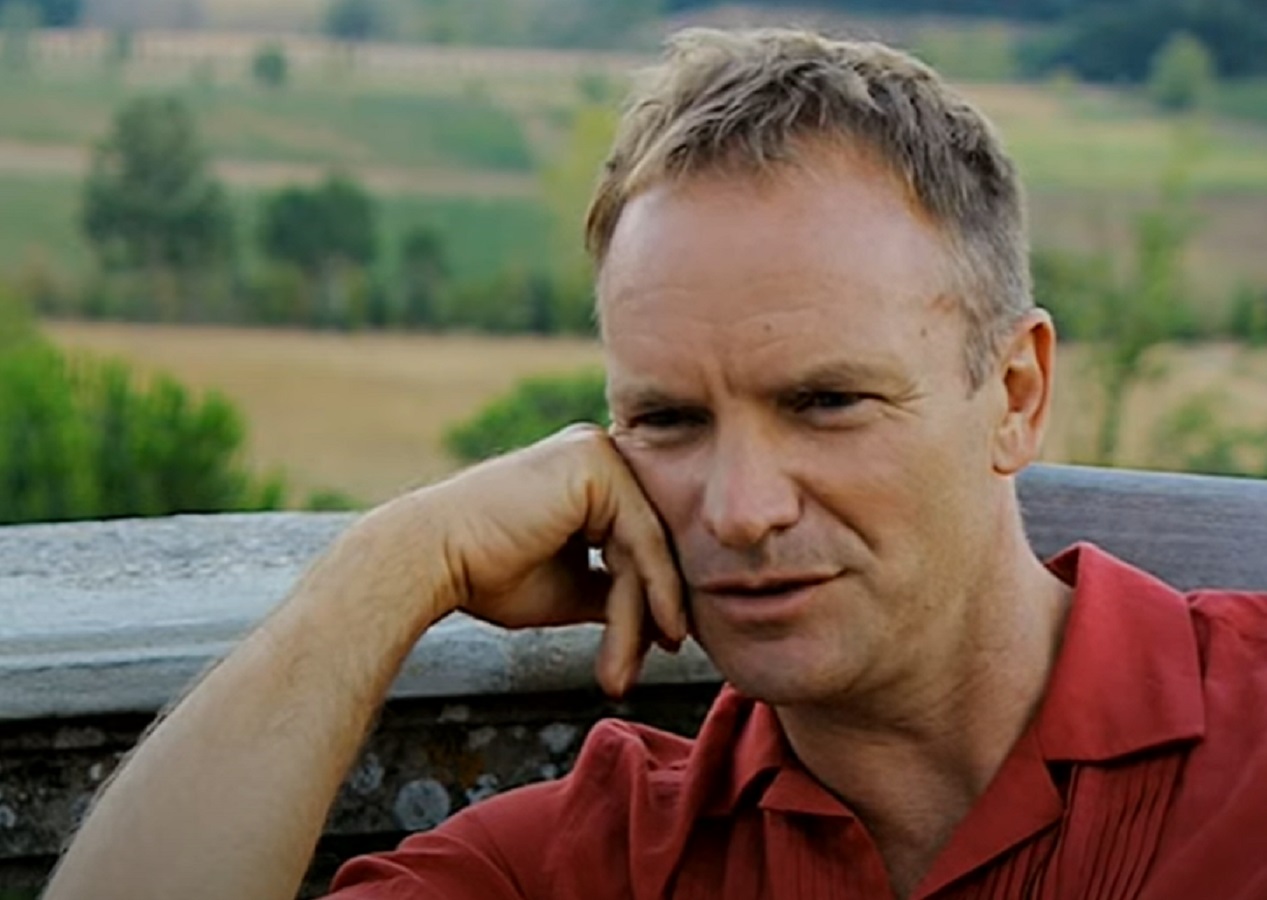 Jim Gable ,Sting-All This Time (2001)
Jim Gable ,Sting-All This Time (2001)
15. She Was The Neighbor
While Sting was still married to Tomelty they lived in West London. Their neighbor just happened to be Tomelty’s best friend, Trudie Styler. Styler had previously seen Sting walking down the street one day.
She didn’t yet know that he was Tromely’s husband and simply saw a cool stranger with green hair walking down the street. She decided then and there that she fancied him. Little did she know where this would lead.
16. They Kept It A Secret
When Styler realized that the cool guy with green hair was her friend’s husband, she likely knew she had to forget about fancying him. He was her neighbor and her friend’s husband: forbidden love territory.
What she didn’t expect was for Sting to share her feelings. Before long the two started a very secret affair. Imagine the situation; it’s your wife’s best friend and she’s also your neighbor.
This affair might have remained a secret—except for one thing.
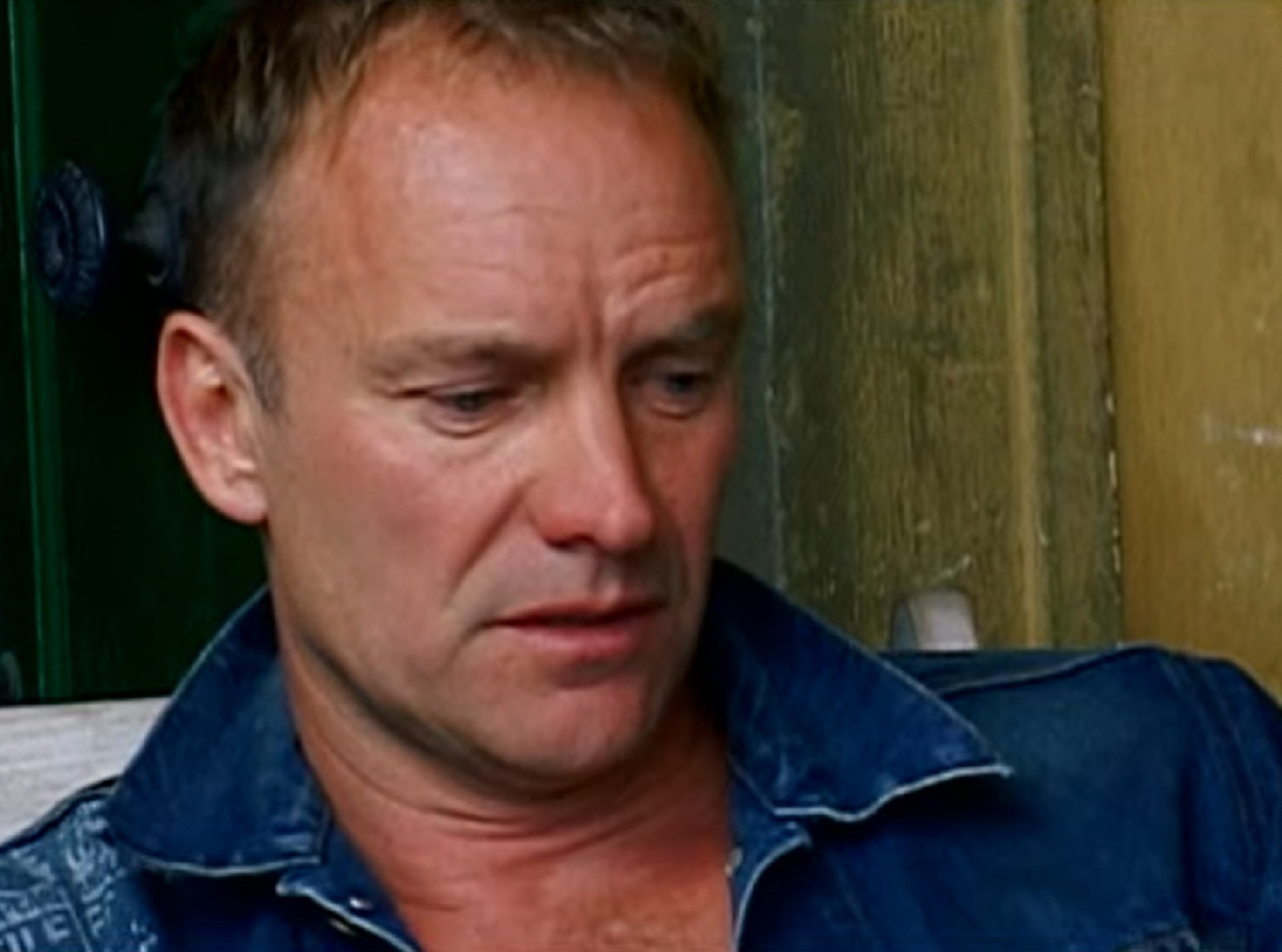 Jim Gable ,Sting-All This Time (2001)
Jim Gable ,Sting-All This Time (2001)
17. He Made A Choice
In 1983, Sting’s affair with his neighbor was about to come out big time. Why? Styler was pregnant. So now Tomelty was very aware of her husband and best friend’s little secret.
While this drama was playing out, Sting was getting ready for a huge tour with the Police. Then he made a shocking choice: Instead of inviting his wife Tomelty along, he invited his pregnant girlfriend.
 Jim Gable ,Sting-All This Time (2001)
Jim Gable ,Sting-All This Time (2001)
18. He Out-Thrilled Thriller
With all this going on in his personal life, somehow Sting still had time to work on his music career. With the Police, he made the album Synchronicity. Around that same time, Michael Jackson’s Thriller was also out there thrilling listeners. It had been number one for most of 1983, but Synchronicity finally bumped it out of the top spot.
It was official, Sting and the Police were heavy hitters. What would Sting do next?
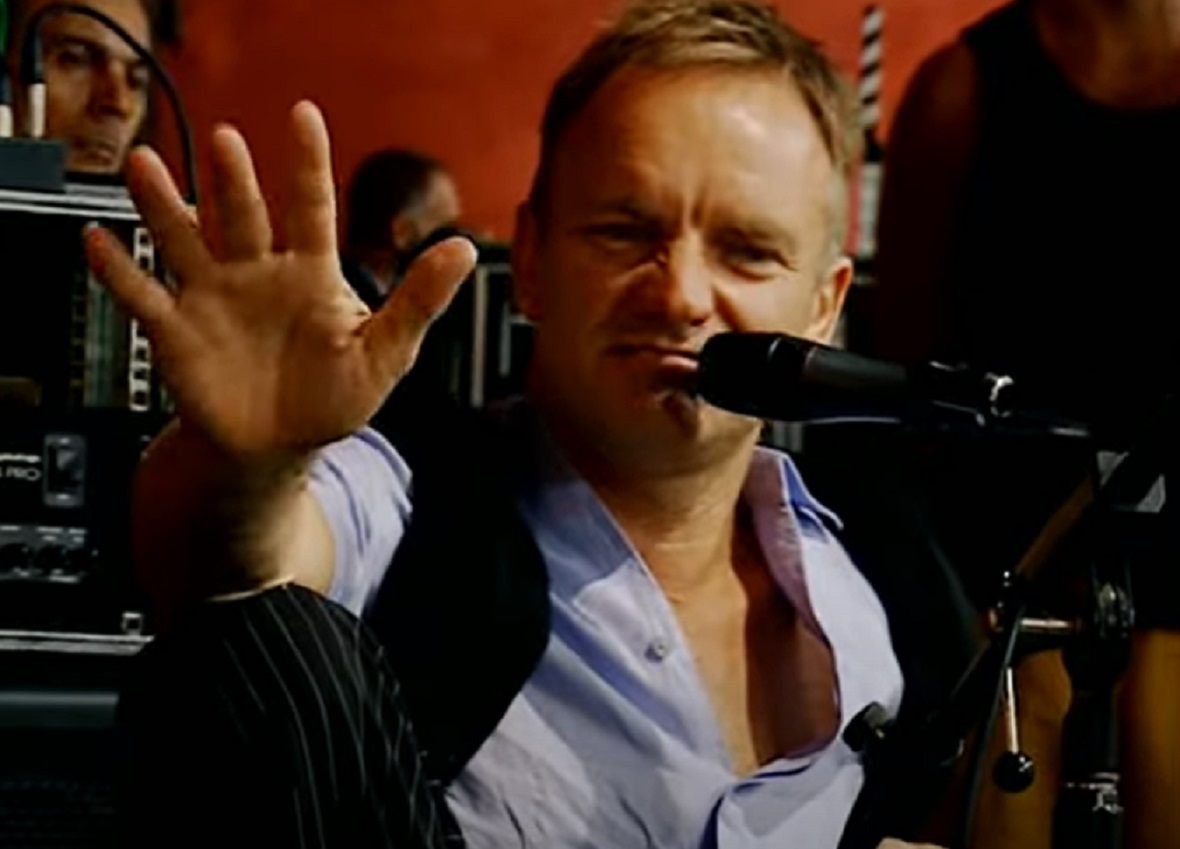 Jim Gable ,Sting-All This Time (2001)
Jim Gable ,Sting-All This Time (2001)
19. He Was A Villain
Brimstone and Treacle was a small film that at one time had David Bowie attached to it. When they finally got the funding to make the movie, Bowie was unavailable, so Sting got a chance to play the villainous character.
While the film was not a huge success, critics took note of Sting’s performance. It also didn’t hurt that his work on the songs featured in the movie helped the filmmakers make money.
Sting certainly had a look that resonated with the public. It also resonated with a couple of comic book writers.
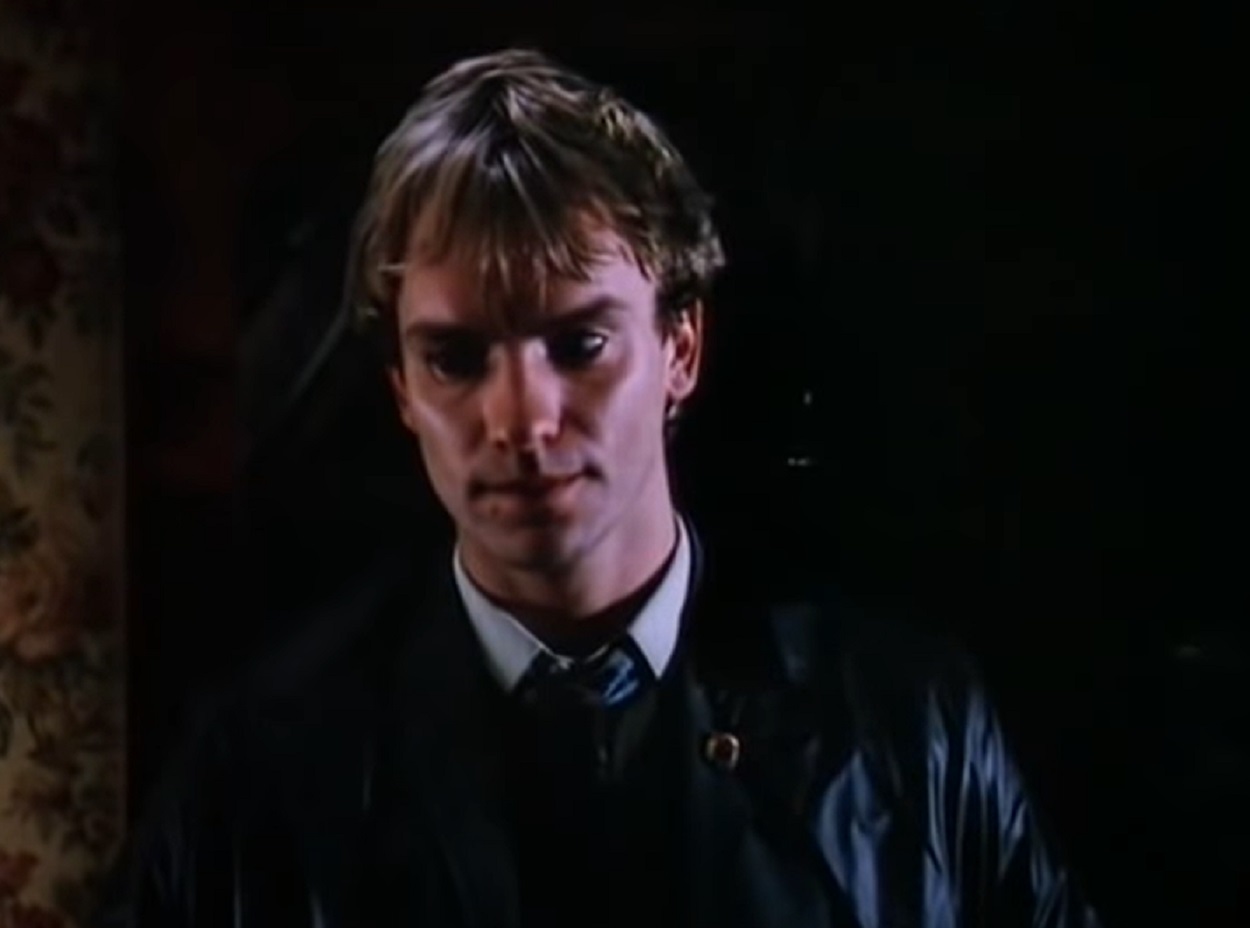 Richard Loncraine , Brimstone & Treacle (1982)
Richard Loncraine , Brimstone & Treacle (1982)
20. He Was An Inspiration
For you comic book fans there’s also a Sting connection, and it’s with Hellblazer. The creators of this comic wanted a certain look for a new character.
The character was John Constantine and the look the illustrators wanted was similar to Sting’s. In case you don’t believe me, I have proof. In one issue Constantine is on a boat, and the boat’s name? “The Honorable Gordon Sumner”.
Sting was everywhere, but not everyone knew who he was.
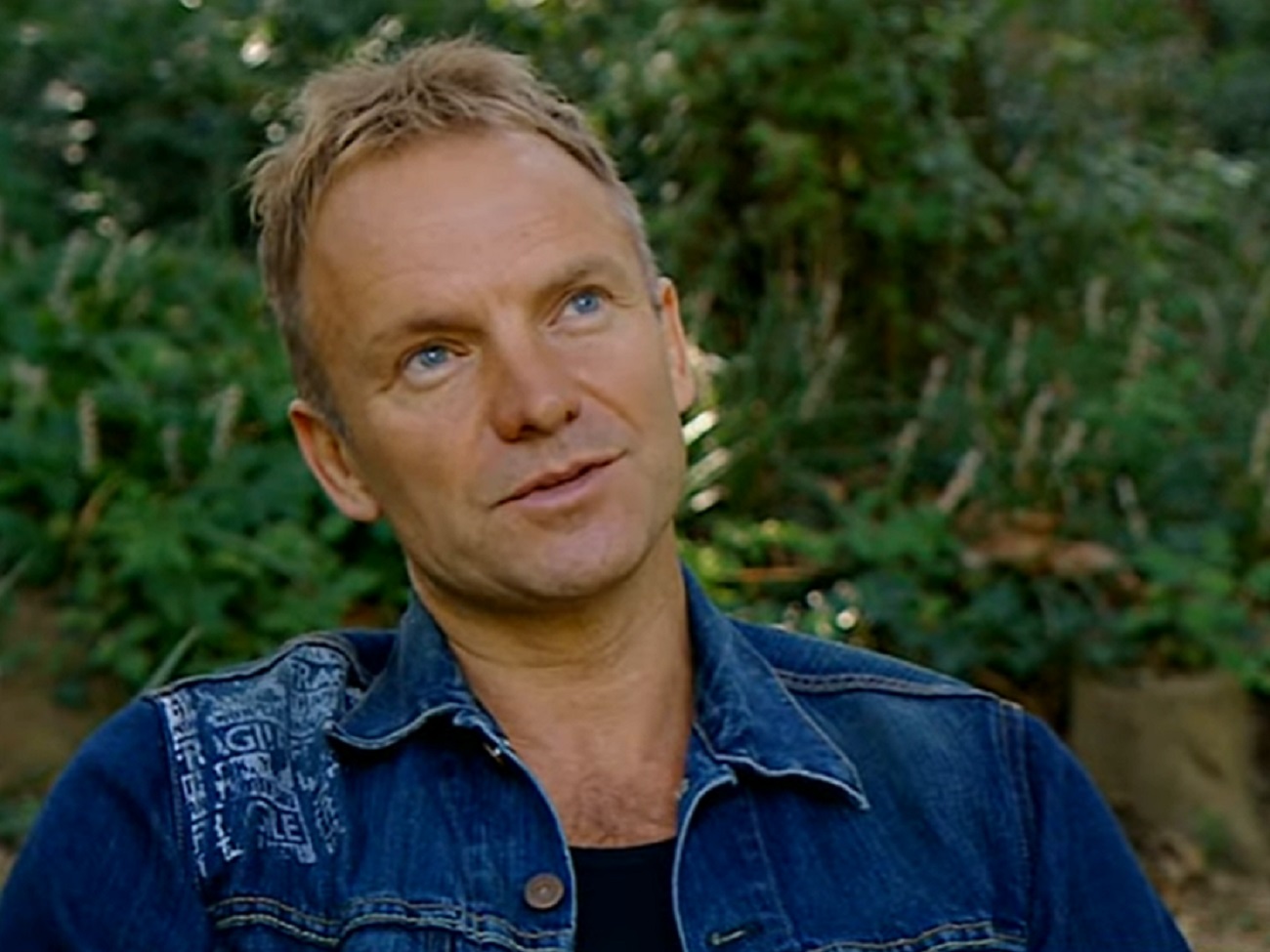 Jim Gable ,Sting-All This Time (2001)
Jim Gable ,Sting-All This Time (2001)
21. He Was Unknown
While Brimstone and Treacle may have been a small independent feature, Sting’s next foray into film was much larger. Before there was Timothee Chalamet’s Dune, there was another ambitious film based on the same sci-fi novel.
This was in 1984 and Sting was thrilled to get a role. When he met his co-star—Star Trek’s Patrick Stewart—he got taken down a notch. Stewart had no idea who Sting or the Police was. None at all.
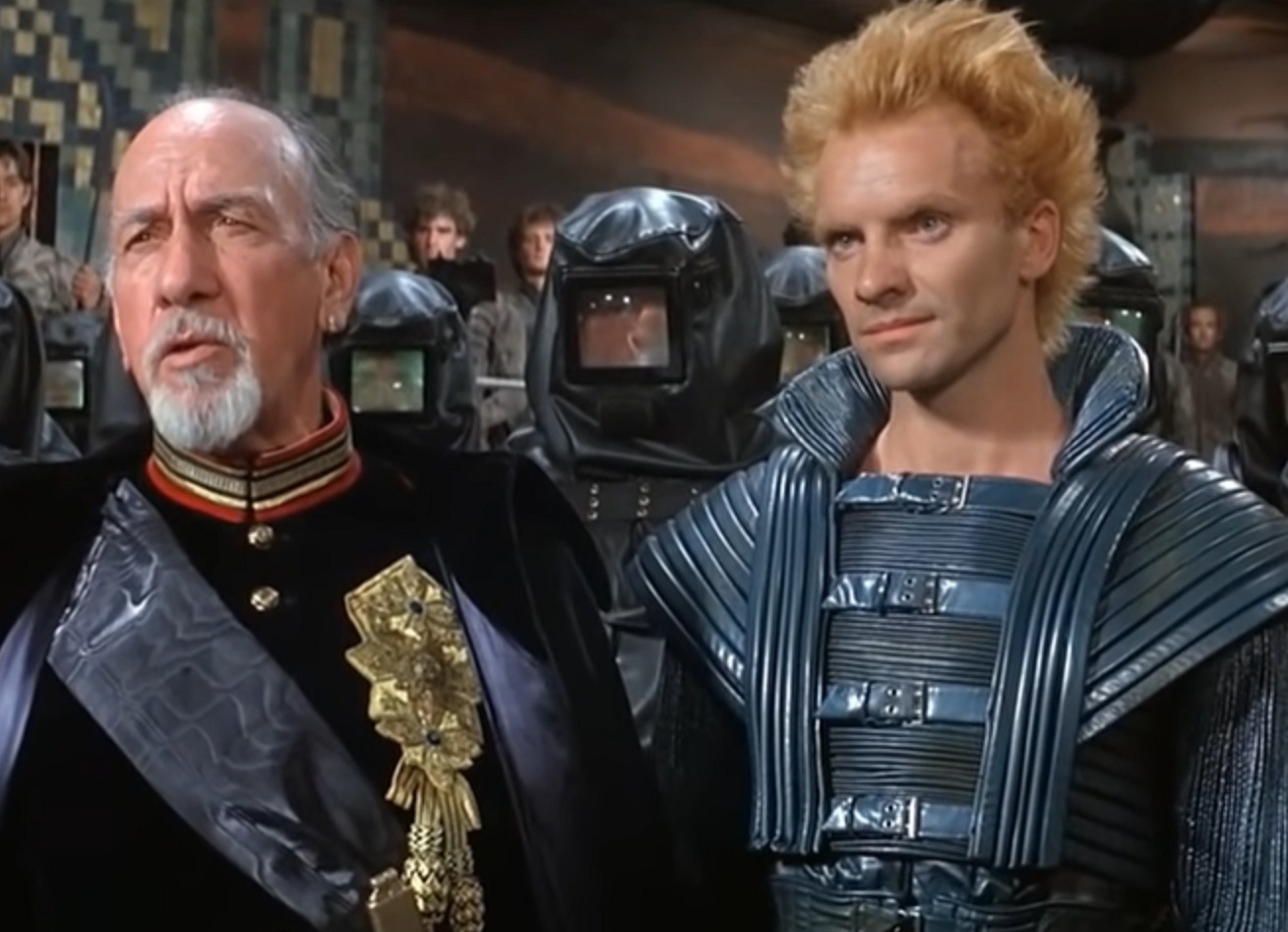 Estudios Churubusco Azteca S.A. ,Dune (1984)
Estudios Churubusco Azteca S.A. ,Dune (1984)
22. He Was A Little Old
When he played Feyd Rautha in Dune, Sting was well into his thirties. His character, however, was 15 years old. While that’s hard for any actor to pull off, try doing it with nothing on. You see, in one scene Feyd Rautha had to step out of a steaming bath without a stitch on.
Sting, despite having a much older person’s body, was up for the full frontal, but it never happened.
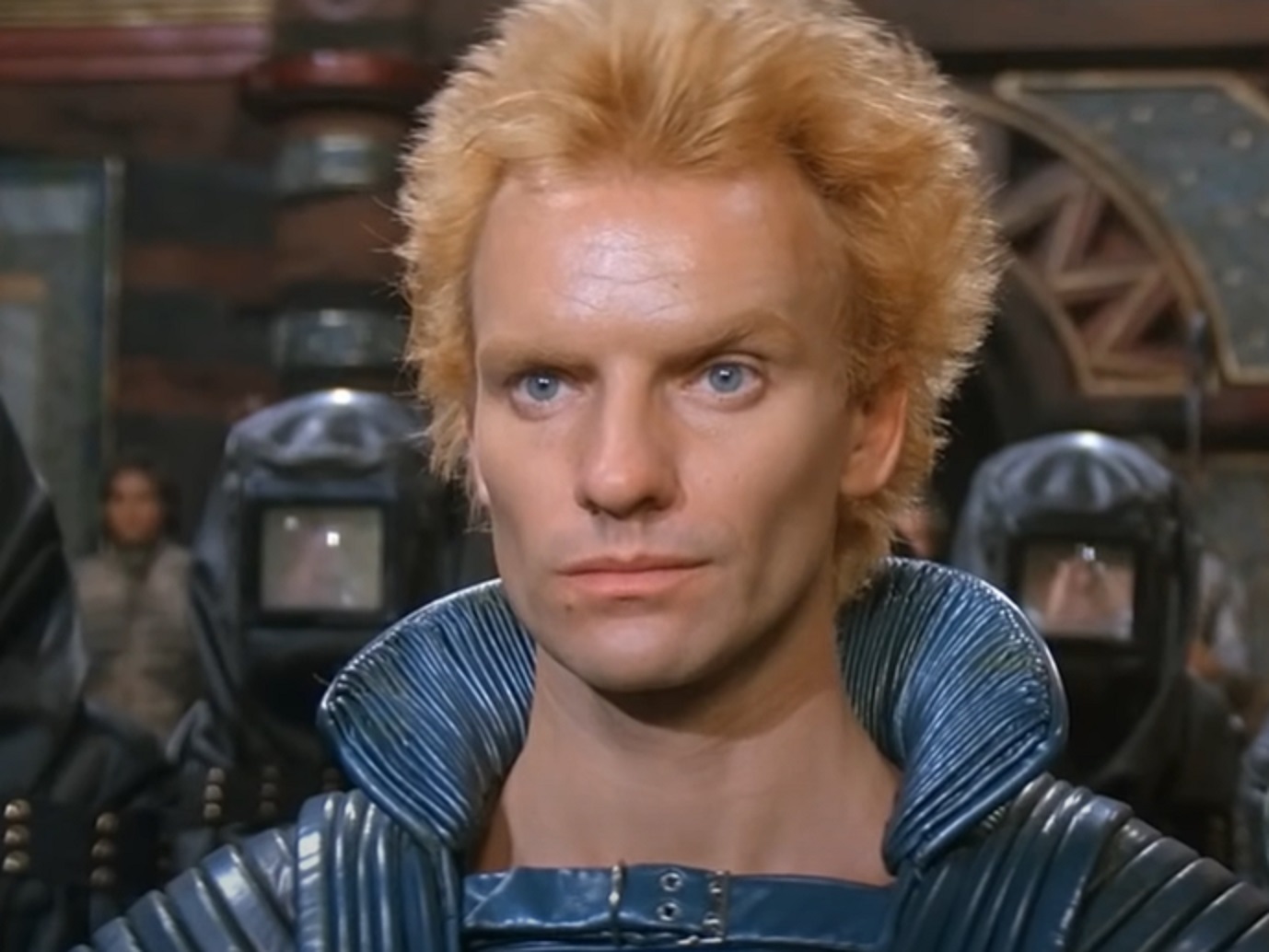 Estudios Churubusco Azteca S.A. ,Dune (1984)
Estudios Churubusco Azteca S.A. ,Dune (1984)
23. He Needed To Be Covered
When the studio heard that Sting was going to be walking around in Dune with his clothes off, they panicked. Soon, the costume people got a frantic call: They needed a futuristic Speedo for Sting.
At the last minute wardrobe concocted a g-string with wings for the scene. Likely, the hordes of Sting lovers wish that they hadn’t bothered.
Yes, Sting’s exposure was huge, but he still had a music career to worry about.
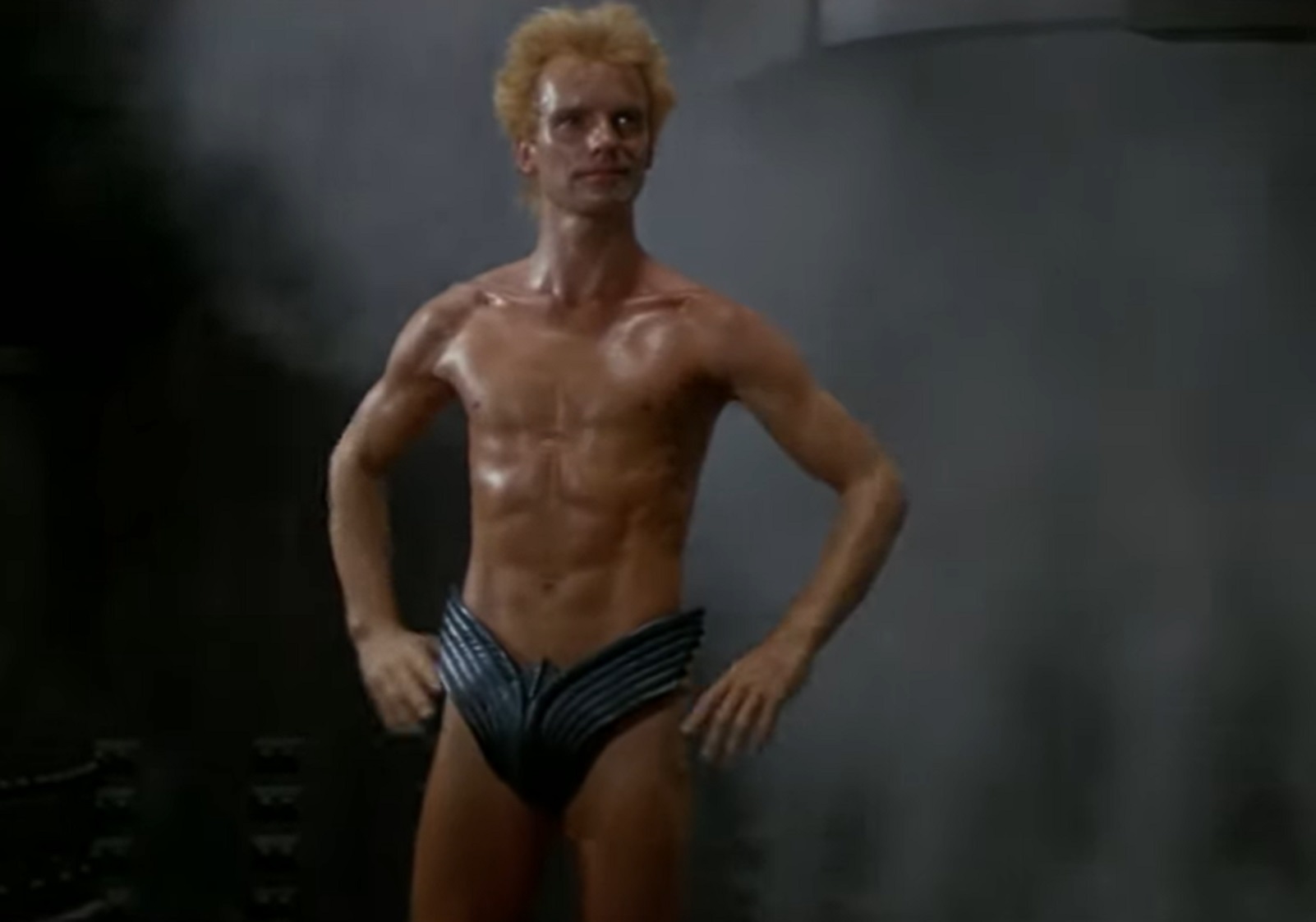 Estudios Churubusco Azteca S.A. ,Dune (1984)
Estudios Churubusco Azteca S.A. ,Dune (1984)
24. They Didn’t Get Along
One of the things that contributed to the success of the Police was the fact that the three members were quite musically diverse. This also, however, led to some pretty horrible arguments.
At one point, Sting got so mad at Summers that his rant full of insults left everyone present in absolute shock. Unfortunately, the altercations didn’t stop at mere name-calling—they got physical.
 Jim Gable ,Sting-All This Time (2001)
Jim Gable ,Sting-All This Time (2001)
25. He Threw Punches
Copeland liked to film a lot of the band’s time together, but there were a few things he missed— and it was for an alarming reason. He said that when the band members got really angry with each other, he couldn’t film it because his hands were too busy throwing punches.
We are talking about three talented musicians, three big egos, and lots of time on the road together. It’s not that surprising that their fights became physical. That, however, isn’t the entire story.
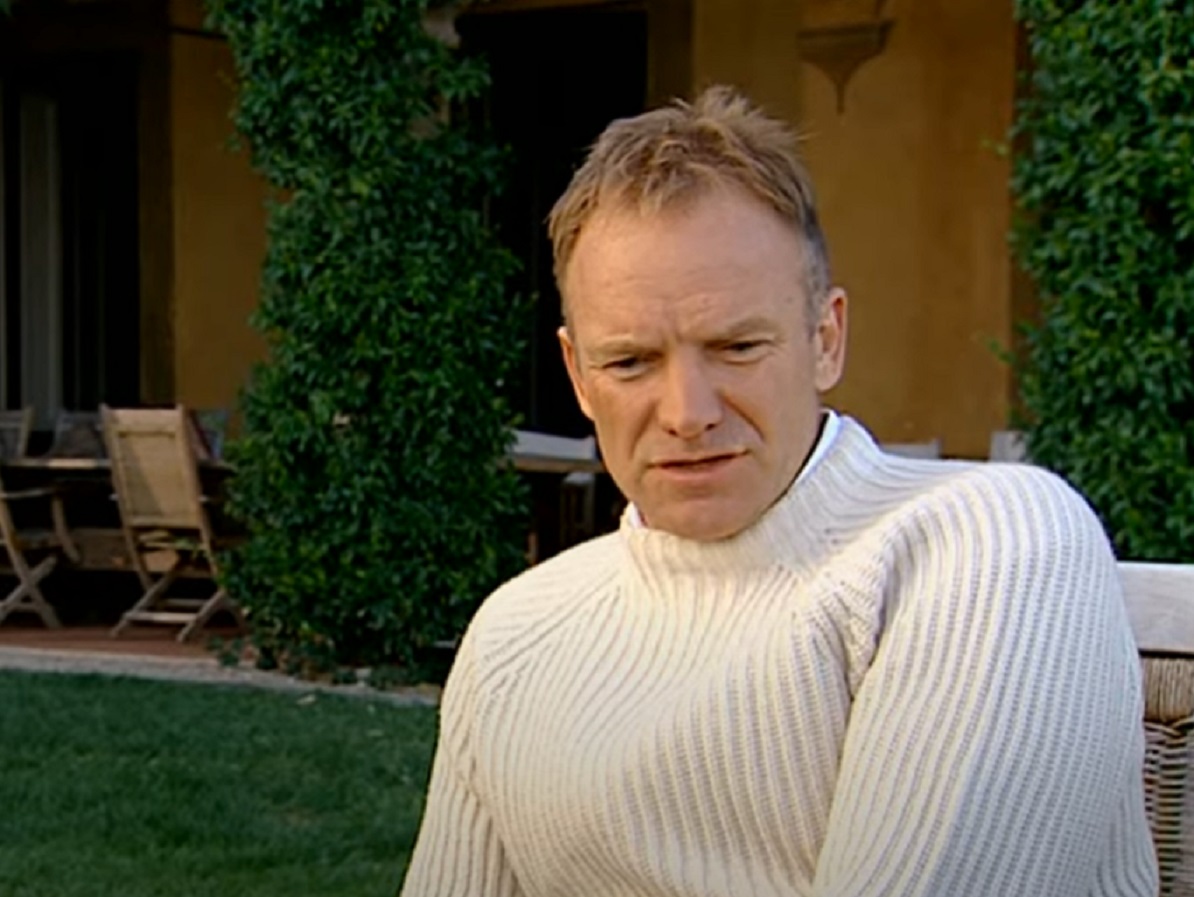 Jim Gable ,Sting-All This Time (2001)
Jim Gable ,Sting-All This Time (2001)
26. They Were Like A Family
Even though the media at the time was focusing on how the three members of the Police were not getting along, Summers later said that there was more to it than that. He said that the three of them were like brothers. So, I guess we shouldn’t be surprised that the three brothers suffered from a little sibling rivalry.
There was one huge problem though: Sting was getting all the attention, and the other members couldn't stand it.
 Elvire.R. from Marseille, France, CC BY 2.0 ,Wikimedia Commons
Elvire.R. from Marseille, France, CC BY 2.0 ,Wikimedia Commons
27. He Alienated Them
The problem with the Police was that Sting was writing all the hit songs and it was hard to argue that this was not the case: They just had to turn on the radio.
To make matters worse, the other two members kept trying to submit their own songs, and Sting found himself in an awkward position. He had to veto the Copeland and Summers’ songs because they were—quite simply—not good enough. Sting was making the Police famous, but he was also alienating the other members.
And speaking or writing hit songs: Sting seemed to be able to do it in his sleep.
 Samit from Seattle, WA, CC BY 2.0, Wikimedia Commons
Samit from Seattle, WA, CC BY 2.0, Wikimedia Commons
28. He Made A Fortune In His Sleep
Sting woke up one night and had an idea for a song based on a dream he had. The song ended up being the hugely popular “Every Breath You Take” which he performed with the Police. Sting didn’t know it then, but this song would later become the most requested song ever.
And now, when someone requests it, Sting makes money. Sting allegedly earns $2,000 a day just on this one song. Sting was certainly helping himself to a whole lot of cash: but he was helping others too.
29. He Wanted To Help
The Secret Policeman’s Other Ball is a benefit show and Sting received an invitation to join in. While performing at the ball, Sting learned about Amnesty International and he saw the world in a completely different way.
The sadness and human suffering he witnessed changed him forever. The good thing was that Sting had caught the bug: He wanted to save the world.
 Raph_PH, CC BY 2.0 , Wikimedia Commons
Raph_PH, CC BY 2.0 , Wikimedia Commons
30. He Was Charitable
After The Secret Policeman’s Other Ball, Sting continued his activism through the supergroup Band Aid, which was a collection of top performers who collected money for people in need.
Band Aid and Sting were the ones who released “Do They Know It’s Christmas?” in support of those suffering famine in Ethiopia. This led to Live Aid, a concert in 1985 that included Phil Collins and Dire Straits.
Sting was giving all he had for charity, but he wasn’t giving his all to his bandmates.
 Philippe Roos from Strasbourg, CC BY-SA 2.0, Wikimedia Commons
Philippe Roos from Strasbourg, CC BY-SA 2.0, Wikimedia Commons
31. He Was Done
It was August 18, 1983 and Sting was performing live with the Police at Shea Stadium. At that moment, he had an epiphany that changed the course of his life. In Sting’s mind, Shea Stadium was as big as it got. While performing, he was wondering where the band could possibly go from here.
Maybe he thought the only road from Shea Stadium was downhill. Whatever the reason, Sting decided—right at that moment—that he was through with the Police. One of the best bands in the world was about to call it quits.
 Jim Gable ,Sting-All This Time (2001)
Jim Gable ,Sting-All This Time (2001)
32. He Was All By Himself
While the end of the Police devastated the music world, it energized Sting. He’d been looking for a deeper connection to his music, and now he could get it in a solo career.
Of course he must’ve been afraid. What if the world didn’t like Sting without the Police? What if he fell flat on his face? The humiliation would be horrible as Copeland and Summers would be allowed a rightly deserved “I told you so”.
 Jim Gable ,Sting-All This Time (2001)
Jim Gable ,Sting-All This Time (2001)
33. He Used His Pain
To make sure his solo career got off to a good start, Sting surrounded himself with very accomplished musicians—most of them from the jazz world. He also mined his own life for the lyrics. He used the pain he felt from his divorce to help him write one of his first solo hits.
This is “Fortress Around Your Heart,” which reached #8 on the US singles chart and #49 in the UK. It had all worked out. In the end, his first solo album—The Dream of the Blue Turtles—became a huge success.
And what about his personal life? How was that going?
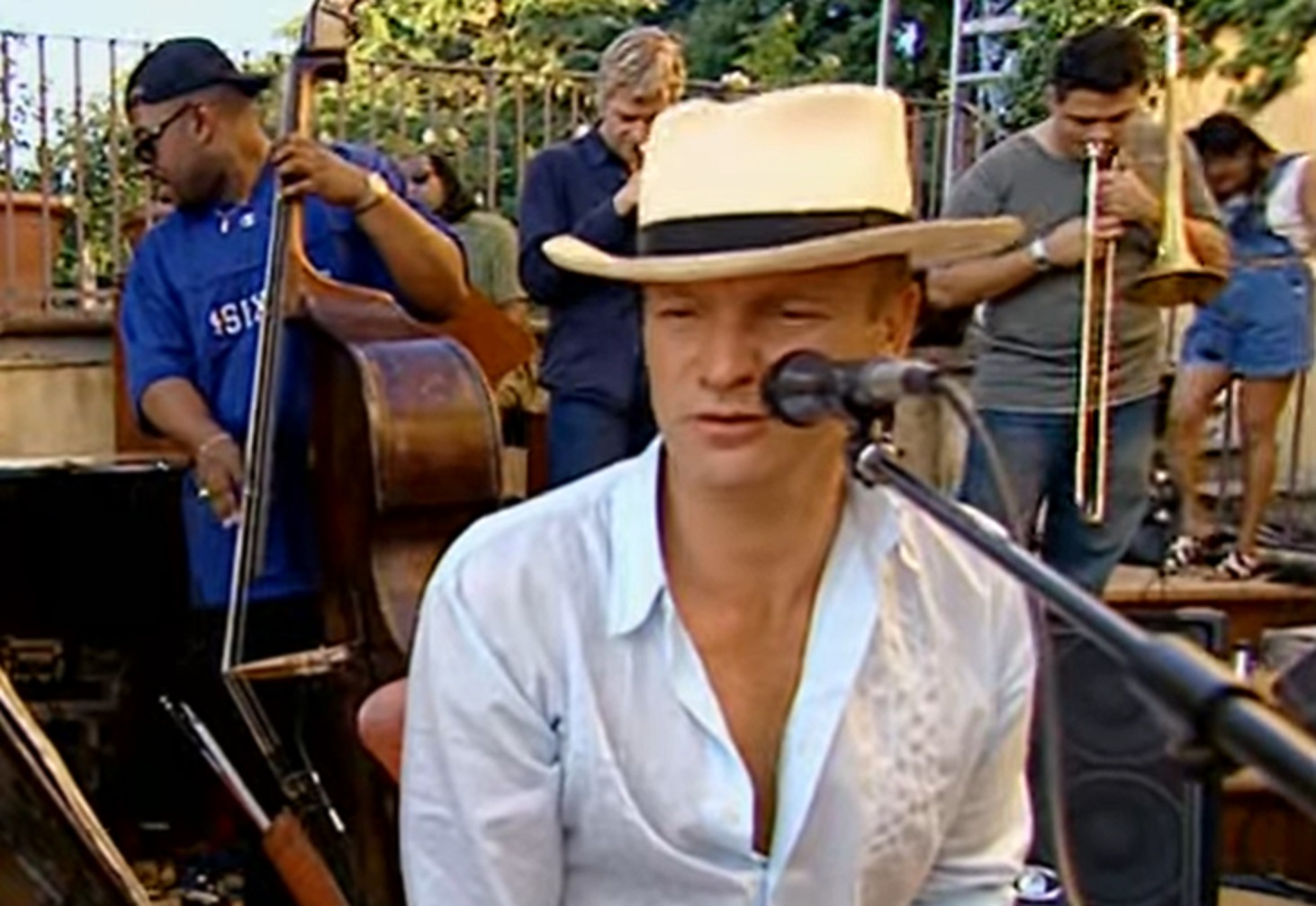 Jim Gable ,Sting-All This Time (2001)
Jim Gable ,Sting-All This Time (2001)
34. They Did A Marathon
Sting had certainly conquered the music industry. He had also, apparently, conquered, the bedroom. In 1990, Sting mentioned that he had rather long sessions in the bedroom with his wife Styler.
Well, there are long sessions and then there are marathons. Sting claimed that he and Styler sometimes spent up to seven hours being intimate. Um…excuse me?
35. The Truth Came Out
Years later, Sting appeared on Inside the Actor’s Studio and fielded a question about these apparent seven-hour love-making sessions. It seemed that Sting had been one to exaggerate.
First he told the host, James Lipton, that if he had seven hours, he would demonstrate. That was just for a laugh. The truth came out later. Apparently, the seven-hour sessions included “movie and dinner”. You could say we got stung.
Obviously marriage agreed with Sting, and he wanted to share the love.
 ArtMediaFactory , Shutterstock
ArtMediaFactory , Shutterstock
36. He Was The Go-Between
Sting was so happy in his marriage that he wanted others to be just as happy. Another one-named singer who was single and ready to mingle was Madonna. Sting had the perfect match for her: the UK film director Guy Ritchie.
While the Madonna marriage didn’t last that long, Sting is still connected to the pop star: he’s the godfather of her and Ritchie’s son Rocco Ritchie.
Another female star that has a Sting connection is Sandra Bullock—but it’s in a weird way.
 David Shankbone, CC BY-SA 3.0, Wikimedia Commons
David Shankbone, CC BY-SA 3.0, Wikimedia Commons
37. She Did It Twice
It may be a coincidence but Sandra Bullock has a strange link to Sting. In 1993, she appeared in the movie Demolition Man and in 2002 she was in Murder By Numbers. Both of these movie titles are also the titles of songs written by Sting.
While most people think that it’s a coincidence that the title of the movie and Sting’s song are the same, it’s actually not quite true.
 Eva Rinaldi, CC BY-SA 2.0 ,Wikimedia Commons
Eva Rinaldi, CC BY-SA 2.0 ,Wikimedia Commons
38. He Heard It Again And Again
Demolition Man was the first film script that Peter Lenkov ever wrote. When he wrote this story about a cryogenically frozen officer—played by Sylvester Stallone—he took inspiration from two things: the film Lethal Weapon and Sting’s song “Demolition Man”.
It turned out that while Lenkov was working on the story, his car’s tape player was broken and kept playing Sting’s song over and over again.
So far, Sting had had pretty positive experiences in film: that, however, was about to end big time.
39. He Had A Fight With Disney
Sting was next going to work with Disney on the 2000 animated film Kingdom of the Sun about Incan culture. When the folks at Disney wanted to take the film in a more comedic direction—and rename it The Emperor’s New Groove—they dropped six of Sting’s too-dramatic songs from the film.
In the end, Sting only provided the first and last songs of the film. Disney also wanted to change the ending of the film, and their idea was so against Sting’s values that he had to slam his foot down.
 Jim Gable ,Sting-All This Time (2001)
Jim Gable ,Sting-All This Time (2001)
40. He Said No—Twice
Disney’s idea was to have the main character destroy a good chunk of the rainforest to build an amusement park. It would be safe to say that this made the eco-minded Sting’s head implode.
Disney got what he was saying and quickly changed the ending. Next, they asked if Sting would perform the opening song. Sting, now used to saying no to Disney, told them his voice sounded too old to sing the song. Disney said fine and turned around and hired Tom Jones to do it. Jones is more than a decade older than Sting.
Things were getting frustrating for Sting—and they weren’t about to get better.
 Jim Gable ,Sting-All This Time (2001)
Jim Gable ,Sting-All This Time (2001)
41. His Timing Was Off
Around the turn of the millennium, Sting had a great idea to bring Arabian music to America. He managed to line up musical artists from Egypt, Algeria, and even Iran to perform in a show called “Desert Roses and Arabian Rhythms”.
Three days before the tour was about to start, terrorists in airplanes toppled the World Trade Center. Needless to say, the tour had to be postponed.
 Michael Foran, CC BY 2.0, Wikimedia Commons
Michael Foran, CC BY 2.0, Wikimedia Commons
42. He Calls It The Ick Factor
In 2004, Sting took a look at a little show called The X Factor UK. He’d never seen it before and was curious as to what they were doing to find new talent. On his first viewing, Sting wasn’t at all impressed.
In his words the show was a “soap opera” and the judges had “no recognizable talent”. He went on to say that if you’re looking for real new talent, look to the pubs and clubs.
Sting was beginning to sound like a crotchety old man. Little did he know, but an odd law change halfway around the world was going to make him even more crotchety.
43. It Was Halfway Around The World
While Sting was continuing his solo career, there was a law change in the US. In 2019, the state of Arizona changed its statute of limitations for victims of abuse. The new law now gave young victims more time to come forward against the adults who offended them. If they were a minor when the infraction happened, they now had until the age of 30 to make a charge.
So what does this Arizona law have to do with Sting? One heck of a lot.
 Jim Gable ,Sting-All This Time (2001)
Jim Gable ,Sting-All This Time (2001)
44. It Was A Meet-And-Greet
With Arizona’s new law in place, a young woman—we’ll call her Jane Doe—came forward with her story about meeting Sting around the time of his concert. The lawsuit against Sting goes something like this. Sting met Doe at a meet-and-greet in an Arizona record store where she had her parents with her.
The two talked and Doe alleges that she told Sting her real age: 15 years old. Unfortunately the story doesn’t end there.
 Jamie Lamor Thompson , Shutterstock
Jamie Lamor Thompson , Shutterstock
45. He Found Her Again
Sting met up with Doe one more time. They met at Dooley’s, the nightclub in Tempe, Arizona where the Police were performing. During the opening act, Sting and his bandmates walked through the club and talked with fans. When Sting saw Doe again, he offered to let her sit on his lap. The star-struck Doe agreed to do it.
 Raph_PH, CC BY 2.0, Wikimedia Commons
Raph_PH, CC BY 2.0, Wikimedia Commons
46. He Made His Move
After the Police’s performance, Sting invited Doe to a house party in Phoenix. She accompanied Sting and Summers to the party. It was at this party that Doe alleges that Sting made his move.
Remember, Sting was at this time in his late 20s, married, and now hitting on a minor. Doe says that she again told Sting her real age and added that she was a virgin.
According to Doe, things progressed from there.
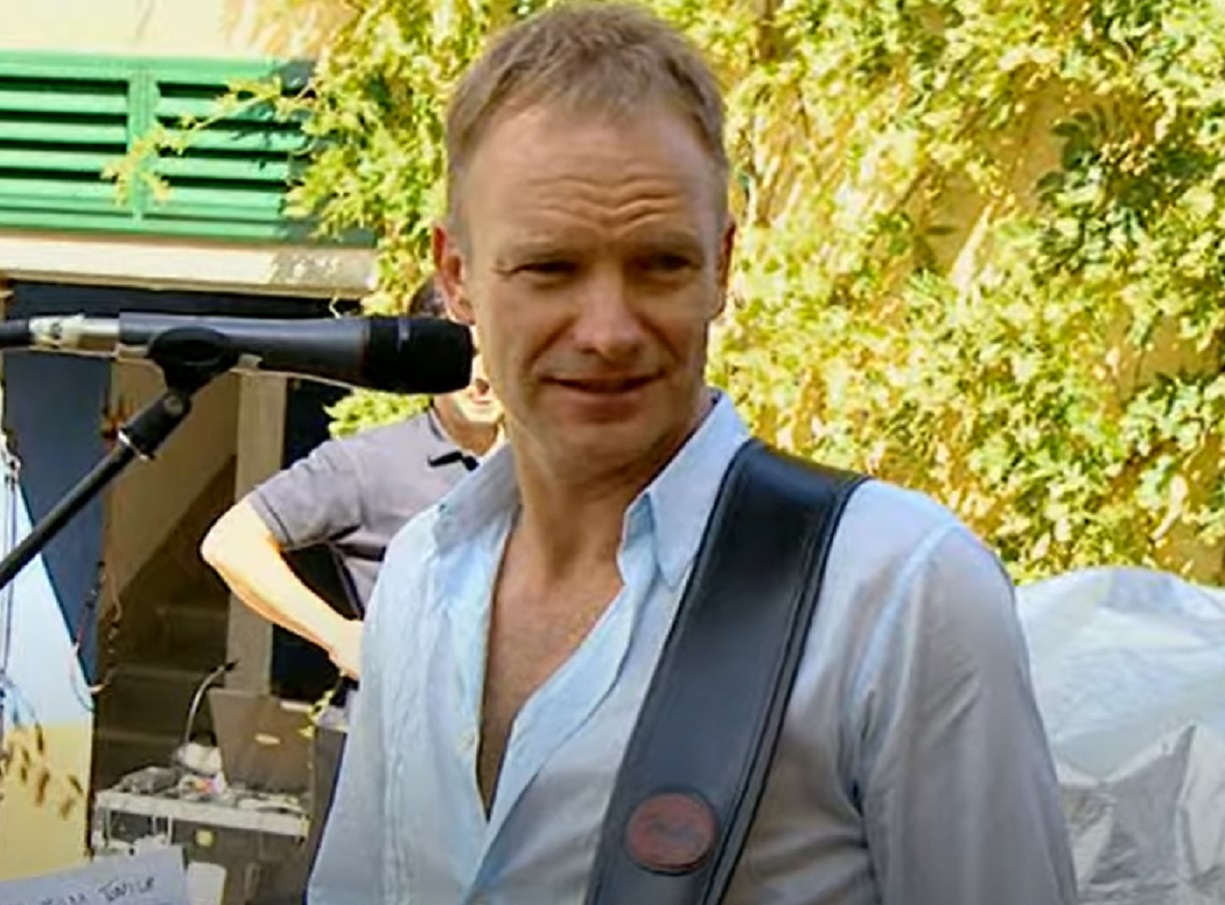 Jim Gable ,Sting-All This Time (2001)
Jim Gable ,Sting-All This Time (2001)
47. They Went To A Hotel
Somehow Sting, Doe and Summers all ended up in Summer’s hotel room. It was here that Doe alleges that Sting had his way with her. She later told the story to her friends, some of her family members, and even her therapist.
It’s unclear why Doe waited so long to go public with her story, but suddenly, many years after the alleged incident, Sting is facing this very serious accusation.
 Randy Miramontez , Shutterstock
Randy Miramontez , Shutterstock
48. He Had A Thing
The two attorneys working for Doe then did a binge listen to all of the Police’s songs. When they came across the song “Don’t Stand So Close To Me” they stopped in their tracks.
This is a song about a school teacher attracted to one of his teenage students. It’s also inspired by Vladimir Nabokov’s book Lolita about a middle-aged man with an infatuation with a young girl who then acts on it. Didn’t this song suggest that Sting had a thing for underaged girls?
Sting had some explaining to do.
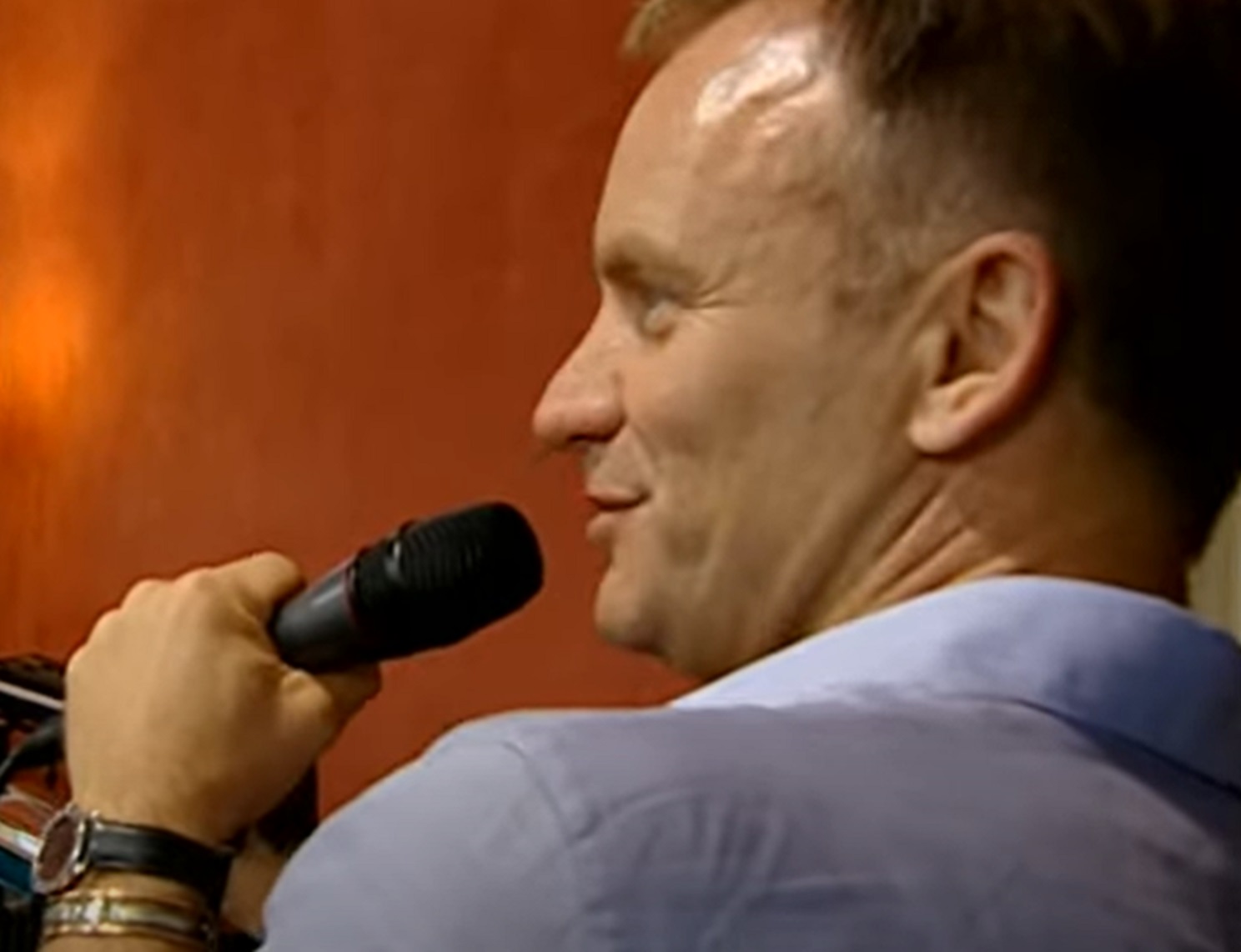 Jim Gable ,Sting-All This Time (2001)
Jim Gable ,Sting-All This Time (2001)
49. He Had To Give His Reasons
Sting now had to explain why he wrote “Don’t Stand So Close To Me”. He said that back then he was very aware that he was considered a heartthrob by many fans, and a lot of them were young girls. When he wrote the song, he said he was doing some “roleplay”—his words not mine—and exploiting this situation for the song. The lyrics of the song certainly, according to Sting anyway, did not imply that he was into young girls.
Okay, so how do you explain this next thing?
50. They Found A Picture
“Don’t Stand So Close To Me” was not the only thing brought out by the attorneys to show that Sting and his band had plans to woo their young fans. They found an old photograph that Police guitarist Summers had published. The photo showed two very young female fans—and a male one—and Summers had put a caption below it: “Fans, Lolita, Canada”.
Now things looked bad for all three members of the Police.
 Beatrice Murch from Buenos Aires, Argentina, CC BY 2.0 ,Wikimedia Commons
Beatrice Murch from Buenos Aires, Argentina, CC BY 2.0 ,Wikimedia Commons
51. She Has Proof
Remember, drummer Copeland enjoyed taking video of many of the exploits of the Police. Well, Copeland had his video camera at the record store meet-and-greet.
Victim Jane Doe swears she is in the record store footage. This would prove that Sting did indeed meet Doe. Doe also alleges that there are other videos and photographs out there of her partying with the Police.
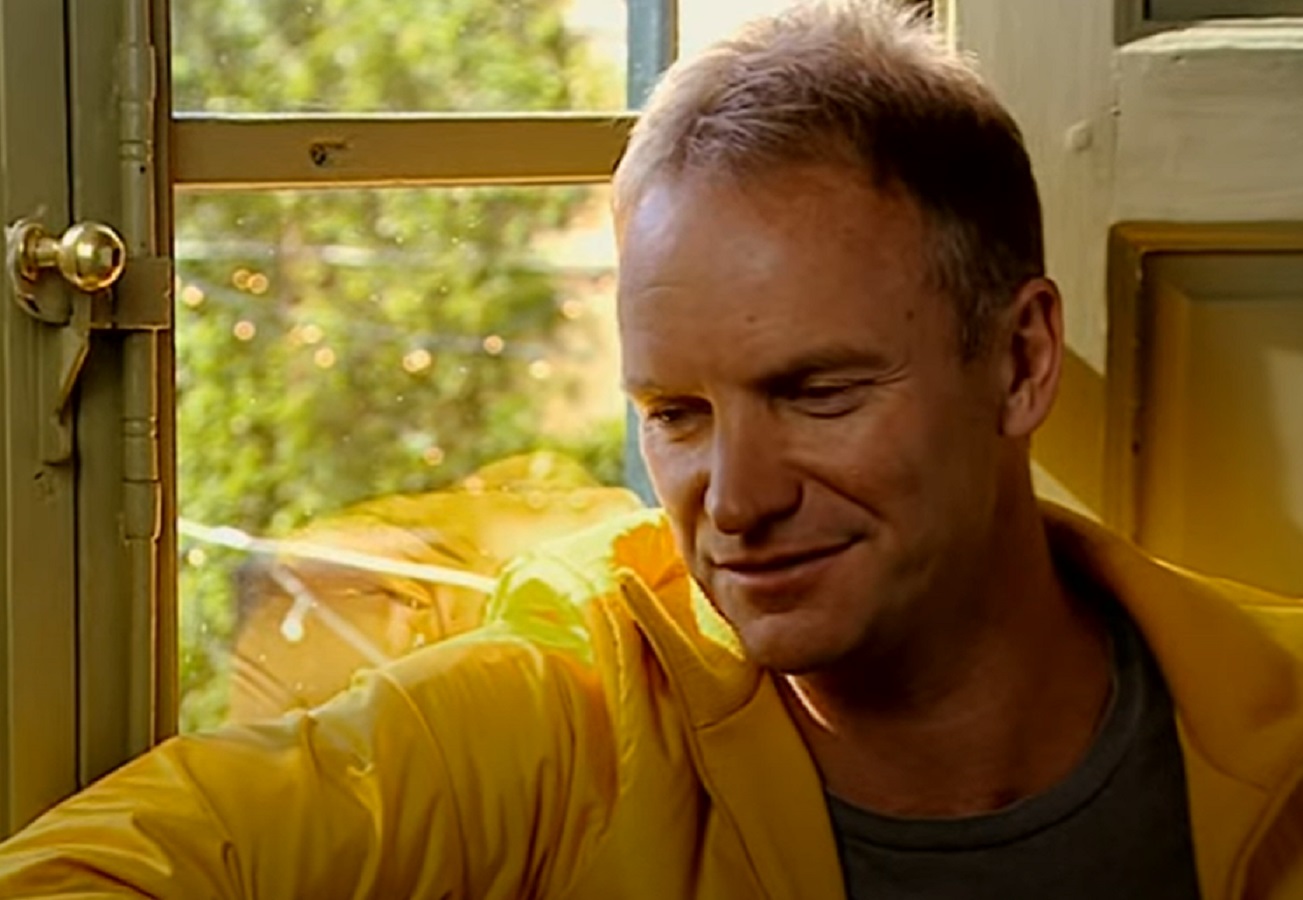 Jim Gable ,Sting-All This Time (2001)
Jim Gable ,Sting-All This Time (2001)
52. Only Time Will Tell
As it stands now, the court has not yet served Sting with anything. Doe and her attorneys are looking for damages of about $75,000 from Sting, the band, and even the promoters of the tour.
While this is not an extraordinarily large amount, the bad publicity could do irreparable damage to Sting’s career. Are the days of the golden boy of music numbered? Only time will tell.









